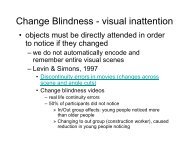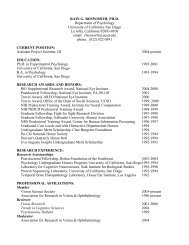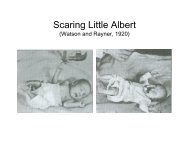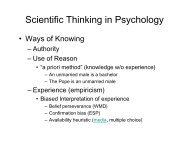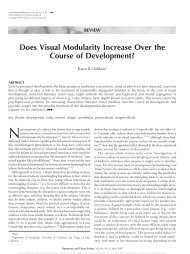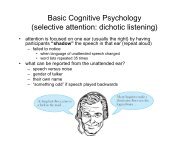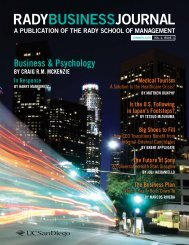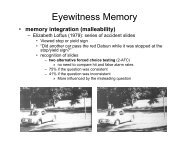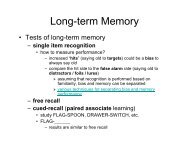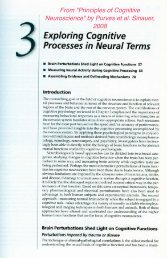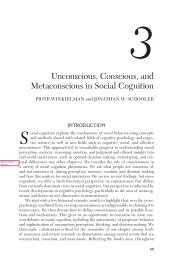For Peer Review Only - Establishing New Traditions
For Peer Review Only - Establishing New Traditions
For Peer Review Only - Establishing New Traditions
You also want an ePaper? Increase the reach of your titles
YUMPU automatically turns print PDFs into web optimized ePapers that Google loves.
Page 5 of 22<br />
1<br />
2<br />
3<br />
4<br />
5<br />
6<br />
7<br />
8<br />
9<br />
10<br />
11<br />
12<br />
13<br />
14<br />
15<br />
16<br />
17<br />
18<br />
19<br />
20<br />
21<br />
22<br />
23<br />
24<br />
25<br />
26<br />
27<br />
28<br />
29<br />
30<br />
31<br />
32<br />
33<br />
34<br />
35<br />
36<br />
37<br />
38<br />
39<br />
40<br />
41<br />
42<br />
43<br />
44<br />
45<br />
46<br />
47<br />
48<br />
49<br />
50<br />
51<br />
52<br />
53<br />
54<br />
55<br />
56<br />
57<br />
58<br />
59<br />
60<br />
attempt to relay the appropriate emotions to his father and her. <strong>For</strong> example, while experiencing<br />
what he considered happiness he would tell his parents that he was feeling “green”. It is unclear<br />
whether there were pre-existing emotion-color biases which were subsequently encouraged by<br />
his parents or whether they were arbitrarily imposed in early life by his parents to infuse in him<br />
<strong>For</strong> <strong>Peer</strong> <strong>Review</strong> <strong>Only</strong><br />
some semblance of an emotional life. In either case, he reports that this strategy helped<br />
immensely. Further, by comparing the color elicited by another person with the emotion that<br />
would be associated with the same color in his own mind, TK was able to "read" the other<br />
individuals' emotions more accurately.<br />
At about the same time that he began associating colors with emotions (Experiment 2), he<br />
also began seeing colored halos around individuals (Experiment 1). The color of these halos<br />
corresponds to TK’s emotional stance toward that particular person, and when a new individual<br />
is encountered a blue halo emerges de-nouveau and the color evolves progressively with<br />
repeated exposure. TK claims that the halos are clearly “seen” or perceived around the person’s<br />
face and body and not merely imagined (although such words lose their resolving power when<br />
dealing with such ineffable experiences as synesthesia).<br />
Experiment 1: TK’s Halos<br />
Neurocase<br />
During our initial interview, TK was accompanied by a female companion who he had<br />
known for several years. We instructed him to look at this individual standing in front of a blank<br />
white screen and TK noted that he perceived a bright red halo radiating approximately 4 to 6<br />
visual degrees from her body. We then drew an outline on the screen surrounding his companion<br />
(see Figure 1). TK noted with surprise that the colored halo became more intense, spread out<br />
from the body, and was blocked precisely and crisply at the outline; behaving in this regard like<br />
URL: http:/mc.manuscriptcentral.com/nncs Email: hbc@mail.med.upenn.edu<br />
5



